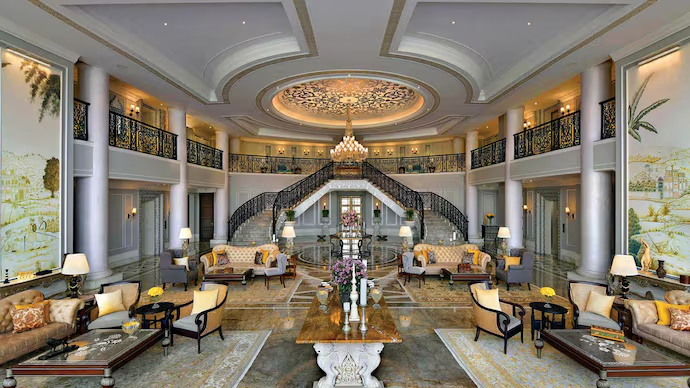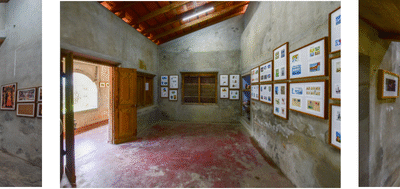Guest Column
Small is Beautiful: The Boutique Arms Race Comes to India

By Taran Chhabra

New Delhi, November 3, 2025: India’s hospitality industry has always celebrated scale. A 500-room hotel in Gurgaon. A sprawling resort in Goa. A banquet hall that could host a thousand weddings a year. For decades, the bigger the property, the louder the statement. But the next wave of winners won’t be the mega-hotels. They’ll be the 60-key palaces, the 40-key retreats, and the 20-key design-led escapes that quietly redefine what luxury means. The most valuable Indian hotels in the next decade will be the smallest.
Global Context
Globally, the race is clear. Investors and developers are chasing boutique assets, hotels under 100 keys that offer not just rooms, but identity. In Europe, historic castles and vineyards have been reborn as luxury retreats. In the U.S., lifestyle hotels have displaced the dominance of anonymous convention properties.
Capital is rewarding scarcity. Guests are rewarding authenticity. And the “arms race” isn’t about who builds the tallest tower, it’s about who creates the rarest experiences.
The Indian Myth of Scale
In India, hospitality has long been a game of size. The Taj Mahal Palace in Mumbai set the tone over a century ago, and post-liberalization, global chains doubled down with mega-hotels in Delhi, Bangalore, and Hyderabad.
The logic was simple: bigger hotels meant bigger wedding contracts, corporate conferences, and tourist groups. With India’s rising middle class, scale was king.
But today’s luxury traveler in India isn’t the middle-class tourist. They are richer, younger, global in taste and they want something else entirely. They don’t want 500 rooms. They want 25 perfect ones.
The Boutique Shift
Step into Rajasthan and you’ll see what’s happening. Forts and palaces once left to crumble are now reborn as 30-key luxury sanctuaries. In Goa, travelers are skipping the giant chains for design-forward villas with private chefs and curated art. In Coorg and Kerala, coffee estates and wellness retreats are drawing global guests at rates higher than many city five-stars.
The new Indian luxury traveler is buying stories, intimacy, and bragging rights. A hotel isn’t just a place to sleep it’s a narrative. And in this market, smaller means rarer, and rarer means more desirable.
Capital Is Catching On
Developers and family owners in India are beginning to shift their strategies.
- Adaptive Reuse: Heritage havelis and colonial-era bungalows are being converted into boutique assets that blend nostalgia with profitability.
- Design-Driven Retreats: Indian craftsmanship is meeting international architecture, creating properties that feel rooted yet global.
- Wellness as Luxury: Ayurveda resorts, yoga retreats, and culinary-focused escapes are now commanding premium ADRs (average daily rates).
- For investors, the math is becoming clear: a 50-room heritage palace with the right positioning can outperform a 300-room urban business hotel on both returns and reputation.
The Contradiction of Scale
Yet, most capital still chases scale. Large developments feel safer, more bankable, easier to justify to financiers. On spreadsheets, 400 rooms look like stability.
But in practice, the boutique segment is where value compounds. Small hotels have higher pricing power, stronger guest loyalty, and lower exposure to commoditized competition. They may not flood the market with keys, but they control the narrative of luxury.
In India, this is more than economics. It’s cultural. A fort in Rajasthan or a tea estate in Assam can never be replicated in Dubai or Singapore. Scarcity here isn’t manufactured—it’s inherited. And that scarcity is what the next generation of luxury travelers are paying for.
The Future of Indian Hospitality
The next decade of Indian hospitality will be defined by boutique.
- Smaller footprints, higher pricing power: A 40-key retreat charging INR 50,000 a night will be more profitable—and more defensible—than a 400-key hotel fighting for INR 7,000.
- Collections over chains: Guests will trust curators of rare hotels more than standardized global brands. Think “collections” that celebrate India’s diversity heritage, design, wellness rather than a single flag across the country.
- Sustainability as brand equity: The most valuable hotels will double as conservation projects saving architecture, landscapes, and crafts while hosting the world’s wealthiest guests.
This is not about abandoning scale altogether. India’s metros will always need large convention hotels. But the prestige, pricing power, and cultural soft power will belong to boutique assets.
The arms race in Indian hospitality has begun. But it isn’t about building bigger towers or adding more rooms. It’s about building what can’t be copied: a fort reborn, a retreat hidden in the hills, a story told through service and space.
The future of Indian hospitality won’t be built in hundreds of rooms. It will be built in fewer keys, rarer stories, and irreplaceable places.
And in this arms race, the smallest hotels will win the biggest battles.
The author is Director, SKYE Hospitality

 News3 days ago
News3 days agoIshara Art Foundation to Present Group Exhibition ‘Amphibian Aesthetics’ at Ishara House in Kochi

 News4 weeks ago
News4 weeks agoUnity Group Launches Unity One Elegante Mall at Netaji Subhash Place, Delhi

 News1 week ago
News1 week agoMumbai Returns to Pre-Pandemic Investment Levels, Surpasses $1 Billion 4th Consecutive Year: Cushman & Wakefield

 News4 days ago
News4 days agoK2 Infragen Delivers Robust H1 with 76.5% Revenue Growth, 70% Profit Jump

 News1 week ago
News1 week agoGurugram Premium Segment Drives Projected Rs 6.65 Lakh Crore Market: ANAROCK

 News1 week ago
News1 week agoGurugram’s Growth Corridors: Micro-Markets Powering the City’s Real Estate Future

 News1 week ago
News1 week agoAdani Cement and Coolbrook to Deploy World’s First Commercial Rotodynamic Heater for Cement Decarbonisation

 News1 week ago
News1 week agoTIL Ltd Reports Q2 FY26 Results with Enhanced Order Book Position, Strong Execution Momentum




























